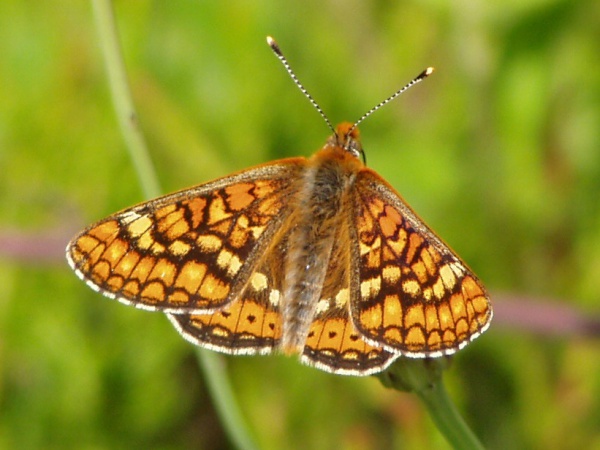Facts About Marsh fritillary
The marsh fritillary is an exquisite butterfly belonging to the Nymphalidae family, frequently observed in marshlands throughout the Palearctic region. This butterfly boasts a fascinating life cycle, particularly during its larval stage, which spans approximately seven to eight months and includes a period of winter hibernation. During this phase, the larvae rely on a specific plant, Succisa pratensis, for sustenance and a suitable hibernation site. The female butterflies are highly selective when laying their eggs, opting for locations on this host plant that will maximize the survival prospects of their offspring.
Several subspecies of the marsh fritillary are dispersed across Europe, Siberia, Africa, and Asia. The wingspan of these butterflies varies, with males measuring between 30 and 42 millimeters, and females between 40 and 50 millimeters. Their coloration and markings can exhibit considerable variation, enhancing their appeal. Regrettably, the marsh fritillary is experiencing a decline in Europe, primarily due to habitat loss, which has spurred various conservation efforts to protect them.
These butterflies favor habitats such as calcareous grasslands, woodland clearings, and moist marshy areas. Their diet predominantly consists of Succisa pratensis, though they also feed on other plant species. The availability of their host plant and the grass height are critical factors in creating an ideal environment for the marsh fritillary.
Their life cycle is intriguing, encompassing stages of egg-laying, caterpillar development, pupation, and finally, adult emergence. They typically remain within a confined area, exhibiting metapopulation dynamics and sedentary behavior. Mating is relatively indiscriminate, with females laying multiple batches of eggs over their brief lifespan.
Predators like cuckoos, frogs, toads, and parasitoid wasps pose substantial threats to these butterflies. In response, conservation strategies include habitat management practices such as moderate farming, controlled burns, cattle grazing, and re-introduction programs. Techniques such as swaling and butterfly re-introduction have also been employed to bolster their populations.
Globally, the marsh fritillary is classified as "Least Concern" but in several regions, it is considered vulnerable or endangered due to habitat loss and population decline. Conservationists are diligently working to safeguard this delicate species and its habitat, ensuring that the marsh fritillary continues to grace the wild for generations to come.

 United Kingdom
United Kingdom